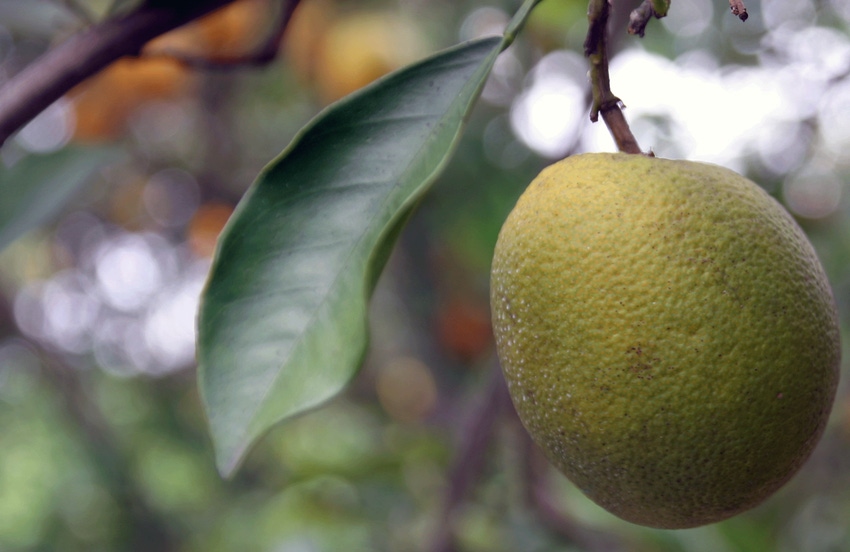
The Florida citrus industry knew citrus greening disease could come but was not well prepared to tackle the disease once it appeared.
So says Bob Shatters, a research molecular biologist with USDA’s Agricultural Research Service in Fort Pierce, Fla., who added the big lesson from the devastating disease is to keep an eye out for what’s occurring internationally and be willing to address issues before major problems occur.

Bob Shatters, left, research molecular biologist with USDA’s Agricultural Research Service in Ft. Pierce, Fla., visits with Phat Dang, research chemist with USDA’s National Peanut Laboratory in Dawson, Ga., following his keynote address to the American Peanut Research and Education Society annual meeting.
“I know that’s easier said than done because there are always problems here, but when this one came, there was a lot of scientific catch up that had to be done,” said Shatters in the keynote address to the American Peanut Research and Education Society annual meeting in Clearwater, Fla., July 13.
The war against citrus greening goes back to 2005 when Florida’s citrus industry was assaulted by the insect Asian citrus psyllids, the vector for the bacteria huanglongbing (or HLB) that attacks the trees and causes citrus greening.
Shatters called citrus greening “a perfect storm” disease because it has a long latency period of more than two years before symptoms are visible on trees. “Bacterium is internal (in the phloem) and therefore chemical delivery is difficult,” Shatters explained. In addition, the bacteria can’t be cultured in the lab which presents challenges.
Shatters said 80 to 90 percent of Florida is either infected or is going to be infected by citrus greening with some in the industry saying 100 percent of the state’s citrus crop could well be infected.
The average per tree reduction is about 40 percent compared to the production of a healthy tree. “That alone put many folks out of business,” Shatters said.
On top of that, management costs to control the disease have doubled. “You have half the production coming out of your trees, but you have doubled your costs,” he said.
Mathematical and epidemiological models predict that by 2019, the Florida citrus industry will no longer be commercially viable, the researcher cautions.
“We are at a tipping point. Promising research is coming out. The idea is to implement this research in stages so that we can get the growers to maintain productivity while better and better strategies come out. We are looking at strategies to slow the rate of the disease progression,” Shatters said.
Heat up the tree to kill the bacteria
To combat the disease, the Florida citrus industry redirected $15 million per year from advertising to research. California citrus also contributed to the effort and $130 million in federal funds are also directed to the work.
Citrus health management areas have been established in Florida to help keep populations of Asian citrus psyllids down. Shatters explains a number of control measures have been implemented, including thermal therapy where large canopies are placed over the trees and hot water or steam is injected to raise the temperatures of the trees for a short time, or about a minute.
“If you heat the plant up, the bacteria is sensitive and it will die,” Shatters said. “This will give a least a couple of years of improved growth.”
Also, canine detection or trained dog have been used to track the disease and improved root stocks seem to be helping, Shatters said. Improved spraying technologies have been used to control the psyllid. In addition, growers are maintaining infected trees with enhanced nutritional programs to keep the canopy healthy.
Bactericides already registered for pears and apples have been granted a Section 18 emergency registration in Florida to help combat the disease in citrus. Shatters notes that these bactericides have proven effective in the greenhouse and in the field.
Shatters said the long-term solution for the disease is new varieties. “There is transgenic work going on and that offers the promise of true immunity,” he said.
The concern facing the industry is that citrus production in Florida will drop below critical volume to maintain the juice industry and infrastructure. “Once the processing plants are gone, you have no place to take your citrus,” Shatters said.
About the Author(s)
You May Also Like






